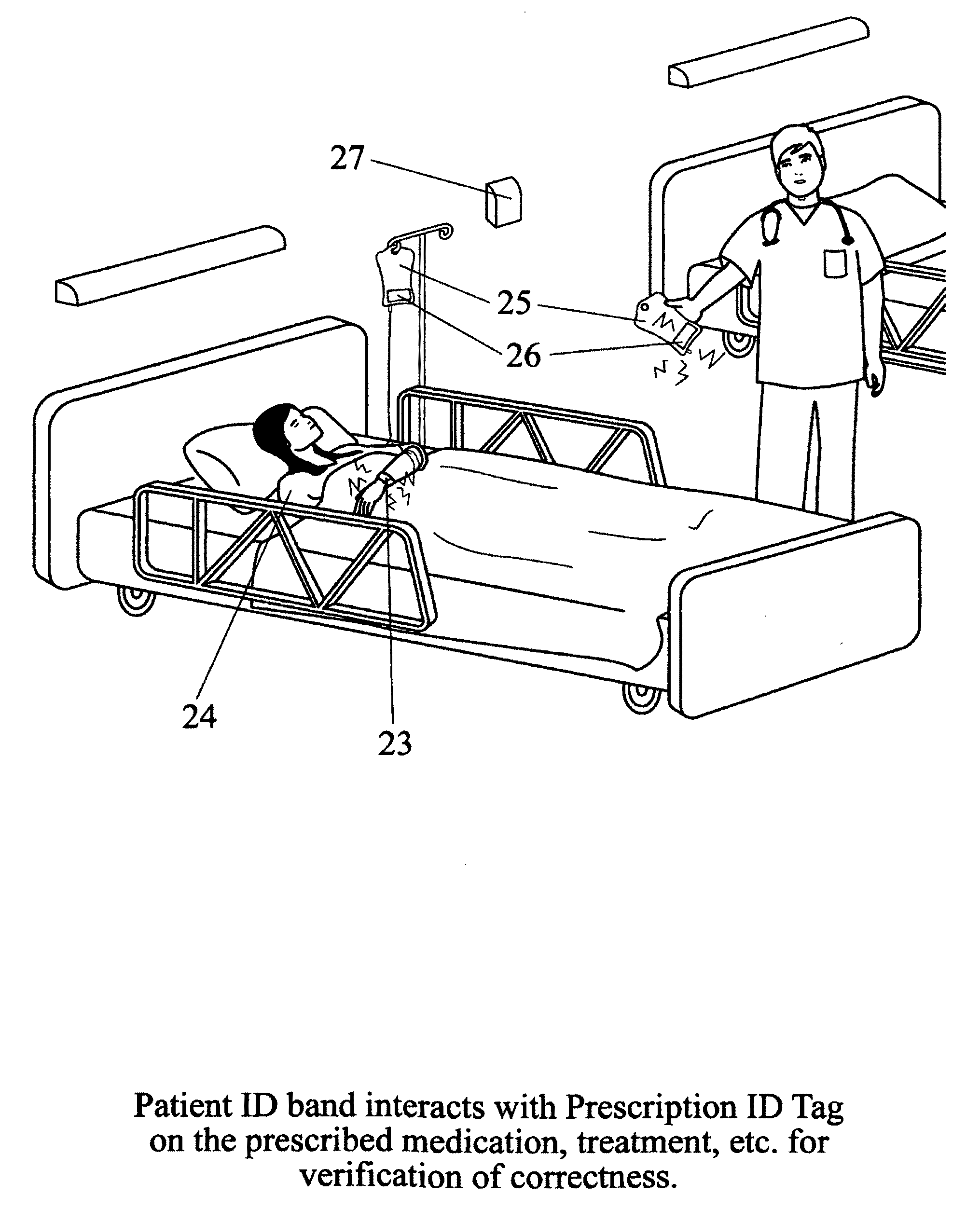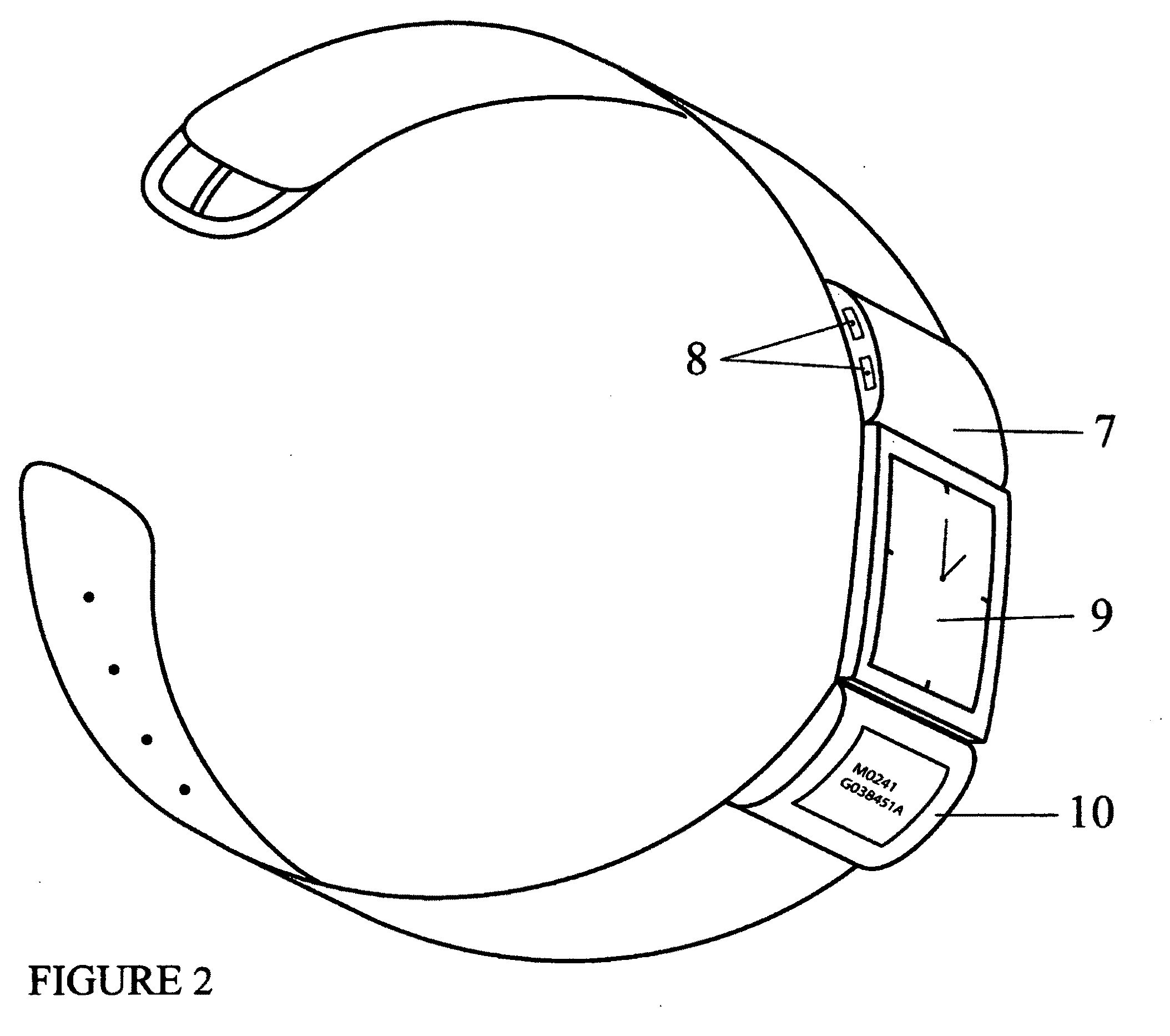Monitoring system and method for patient care
a monitoring system and patient technology, applied in the field of patient care monitoring system, can solve the problems of reducing immunological function, affecting the quality of life of patients,
- Summary
- Abstract
- Description
- Claims
- Application Information
AI Technical Summary
Problems solved by technology
Method used
Image
Examples
Embodiment Construction
[0029]This invention presents a practical and accurate system to monitor patient care to avoid most common medical errors in a healthcare facility while it adheres to the standard healthcare work procedures and routines in administering patient care. The transparency in conducting the monitoring without requiring care givers to perform additional work steps or disrupting the trust between patients and care givers ensures this invention to be adopted and accepted by healthcare facilities. It also differentiates itself from any prior arts.
[0030]The hardware and software detailed in claim 1 consists of the following hardware components along with imbedded operating software to enable each to function as described below:[0031]1. The patient identification device as illustrated in FIG. 1 is in the most commonly employed configuration of a wrist band. This waterproof wrist band contains a battery pack [1] which can be charged via electrical contacts [4] or electromagnetically without elec...
PUM
 Login to View More
Login to View More Abstract
Description
Claims
Application Information
 Login to View More
Login to View More - R&D
- Intellectual Property
- Life Sciences
- Materials
- Tech Scout
- Unparalleled Data Quality
- Higher Quality Content
- 60% Fewer Hallucinations
Browse by: Latest US Patents, China's latest patents, Technical Efficacy Thesaurus, Application Domain, Technology Topic, Popular Technical Reports.
© 2025 PatSnap. All rights reserved.Legal|Privacy policy|Modern Slavery Act Transparency Statement|Sitemap|About US| Contact US: help@patsnap.com



